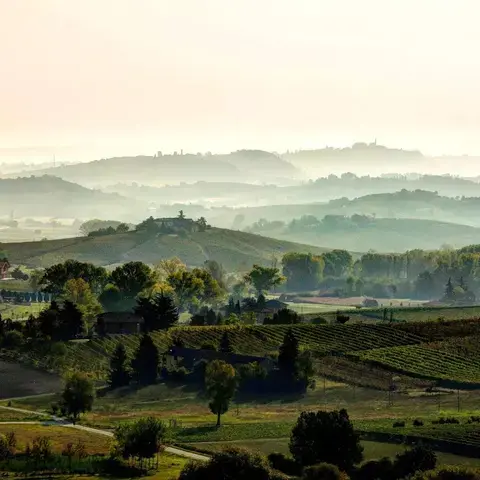Mauro Colagreco needs no introduction, the driving force behind the three-Michelin-starred restaurant Mirazur in Menton, named the best restaurant in the world by The World's 50 Best Restaurants in 2019. Nature is the fil rouge of the chef's cuisine and philosophy and he approaches gastronomy from the earth and the (wonderful) landscape that surrounds him. His restaurant, which is distinguished by a cosmopolitan kitchen brigade, is located near the Italian border, at one end of the Côte d'Azur, immersed in a lush territory, amidst epic terracing and sea-view cultivations.
Elected a UNESCO Ambassador for Biodiversity last year, the chef uses the products of his biodynamic gardens among the ingredients of his dishes: veritable gardens overlooking the sea, close to the mountains, where cultivation is based on the Moon's influence on the Earth. Here, the menu follows the phases of the moon and is divided into four parts: Roots, Leaves, Flowers and Fruit. For seafood, Colagreco turns to local Mediterranean fishermen, for meat, poultry and dairy products he turns to local breeders and farms. All in the name of the shortest possible supply chain, respecting nature and its cycles. The result? A riot of aromatic herbs, vegetables, citrus fruits and flowers.
Let yourself be inspired by Mauro Colagreco's iconic dishes: here are the creations that the chef prepared on 7 November at the Hotel Splendide Royal in Lugano, in the kitchen of Executive Chef Domenico Ruberto, for S.Pellegrino Sapori Ticino 2023. The festival, in its 17th edition, focused on the culinary art of France and saw in Colagreco an exceptional protagonist. On the table, guests found a small parchment with verses from Pablo Neruda's Ode to Bread: a tribute to the art of breadmaking, accompanying a warm loaf prepared by the chef himself.
Salt-crusted beetroot with caviar
The menu paid homage to autumn and its flavours, ennobling simple vegetable ingredients such as pear, beetroot or artichoke, alongside precious elements such as oyster, caviar or truffle.
In a game of role reversal, simple and 'common' ingredients became protagonists, while those conventionally considered more 'luxurious' were transformed into important accompanying notes: salt-crusted beetroot with caviar Oscietra Maison Sturia (pictured top), for example. For this dish, the vegetable is planted and stored for two years underground, then cooked in a salt crust to enhance its flavour, just like meat or fish, and then served with caviar sauce.






